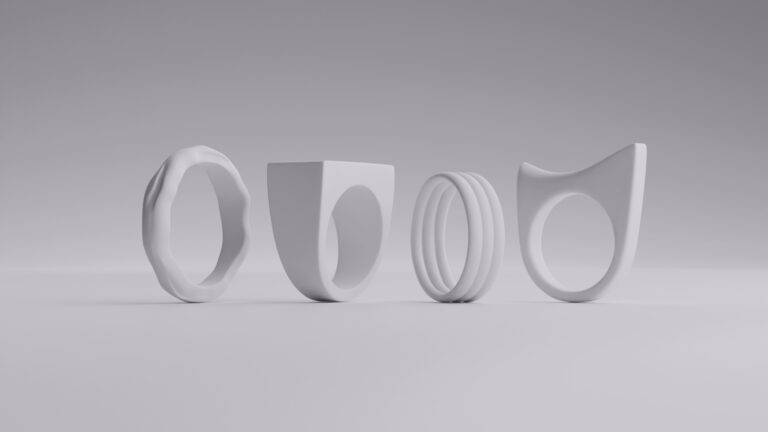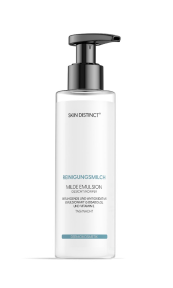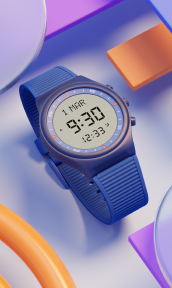Choosing the right 3D animation software can make or break your next project. Whether you’re crafting jaw-dropping product visuals or breathing life into a character frame by frame, the tool you use matters just as much as your creative vision.
Now more than ever, 3D animation isn’t just for the Pixar crowd. It’s being used in everything from indie video games to e-commerce ads to virtual showrooms. In 2025, the line between tech and art is blurrier than ever — and the software on this list proves it. Let’s break down the best 3D animation tools on the market right now, what they do well, where they shine, and what type of user they’re best for.
Autodesk Maya

Autodesk Maya is the heavyweight champ of professional 3D animation software — and it’s been holding that title for years. Praised for its ultra-deep toolset, it’s the go-to choice for studios working on blockbuster films, AAA games, and high-end commercials. From advanced 3D character animation to realistic simulations and flawless rendering, Maya gives you full creative control down to the tiniest detail. It stands out for its reliability in large pipelines, its customizability through scripting, and its reputation as the industry standard for serious animators.
Professional-grade capabilities
Autodesk Maya is still the gold standard for professional 3D animation software. Used by studios like Pixar, DreamWorks, and ILM, it’s made for serious animators who need complete control.
Maya’s strength is its deep toolset. Rigging, modeling, rendering, 3D character animation — it does it all with surgical precision.
For example, Maya’s HumanIK rigging system is ideal for animating complex character skeletons, and its integrated Arnold Renderer delivers high-quality, photorealistic visuals.
It’s not a plug-and-play app. Maya comes with a learning curve, but once you’re fluent, you’ll never look back.
Massive plugin and script support
Maya’s popularity means there’s a whole ecosystem of plugins, MEL scripts, and learning resources built around it. From crowd simulations to hair and cloth physics, you can expand the software to match your studio’s needs.
That flexibility also makes Maya a favorite in VFX pipelines. You’re not boxed into a one-size-fits-all workflow — Maya bends with you.
Industry-standard across multiple sectors
Maya is used not just in film and animation, but also in game development and advertising. If you’re building a career or scaling a pro team, knowing Maya is practically a prerequisite.
Conclusion
Maya is powerful, deep, and trusted across the industry. But it’s overkill if you’re just getting started or only need basic functionality. For freelancers, e-commerce animators, and small studios, it might be more than you need. Still, if your goal is professional 3D animation software that can handle anything, this is it.
Blender

Blender proves that open-source doesn’t mean second-rate — in fact, it might just be the most impressive free 3D animation software out there. Year after year, it keeps leveling up, offering pro-level features like sculpting, rigging, 3D modeling, rendering, and even video editing — all in one sleek package. It’s praised for its flexibility, active development, and massive community support, making it a top pick for freelancers, indie studios, and anyone wanting serious power without the price tag. In 2025, Blender isn’t just a budget alternative — it’s a real contender across the board.
Free but fully loaded
Blender continues to defy expectations. It’s 100% free, but feels like it should cost a thousand bucks. You get everything — sculpting, modeling, texturing, rigging, animation, rendering, even video editing.
In 2025, Blender’s new real-time viewport rendering makes it easier than ever to see what you’re working on without bogging down your system. It’s especially useful for e-commerce pros looking to create quick, clean CGI assets.
Strong community and documentation
The Blender community is massive — and that’s a feature in itself. Need a tutorial? Someone’s made one. Need a plugin? Someone’s built it. Want to learn from pros? Blender’s YouTube ecosystem is thriving. The software evolves fast because developers actually listen to users. New updates are frequent, and they usually deliver.
Great for freelancers and small businesses
If you’re creating product animations or running a creative studio, Blender gives you pro-level features without the licensing cost. With add-ons like Auto-Rig Pro or BlenderKit, you can automate complex tasks and access a library of 3D assets — perfect for tight deadlines and solo projects.
Conclusion
Blender is hands-down the best free 3D animation software in 2025. If you’re just getting into 3D modeling or want powerful tools without the price tag, Blender is your best friend. It might not be the standard in big studios yet, but it’s quickly closing the gap.
Autodesk 3ds Max

Autodesk 3ds Max is a modeler’s dream come true, especially if you’re working in architecture, interior design, or high-end product visualization. Known for its precision and clean modeling workflow, it’s often the first choice for designers who want to build detailed, photorealistic environments and objects. With powerful rendering engines like V-Ray and Arnold built in, 3ds Max makes it easy to produce stunning visuals with lifelike lighting and textures. It might not be the go-to for full-on 3D character animation, but when it comes to crisp, beautiful models? This one’s hard to beat.
Streamlined modeling workflow
3ds Max is often compared to Maya, but it leans more toward modeling and visualization than character animation. Its modifier stack makes modeling intuitive, and 2025’s improvements to smart extrusions and boolean operations make it even faster.
The viewport is also cleaner, with real-time rendering previews that help product designers visualize every bevel and curve.
V-Ray and Arnold rendering integration
When it comes to photorealism, 3ds Max + V-Ray or Arnold is hard to beat. This combo makes it ideal for architectural renders, product shots, and commercial animation. For example, a high-end skincare brand can use 3ds Max to create realistic CGI product animations with soft shadows and liquid effects — all without a physical photoshoot.
Not ideal for character-heavy work
If you’re planning a full 3D character animation, 3ds Max isn’t your go-to. It can do it, but Maya or Blender will serve you better. Still, for modeling, texturing, and lighting static scenes or turntable animations? 3ds Max is a beast.
Conclusion
3ds Max shines in environments, objects, and architectural visualization. If you’re in e-commerce and want professional 3D animation software that helps you render stunning product visuals, this one’s worth considering.
Cinema 4D

Cinema 4D is the sweet spot between power and simplicity — it’s got a smooth learning curve that beginners love, and motion graphics tools that pros swear by. It’s especially popular among designers, video editors, and animators who want to create slick, eye-catching visuals without spending months learning the ropes. With seamless integration into After Effects, a rock-solid MoGraph toolkit, and real-time rendering thanks to Redshift, it’s built for fast, stylish, professional results. If your focus is on polished brand storytelling and visual flair, Cinema 4D brings the magic without the headache.
Easiest to learn for motion designers
Cinema 4D is a top pick for those who work in motion graphics or broadcast animation. It’s clean, intuitive, and deeply integrated with Adobe After Effects, making it a staple for video editors and motion designers.
The MoGraph toolset lets you build procedural animations fast — think bouncing logos, product fly-ins, or animated type that feels alive. Even beginners can get up and running in a weekend.
Powerful integrations and plugins
In 2025, Cinema 4D comes with Redshift fully integrated, which means faster, real-time rendering right in your viewport. It also supports USD (Universal Scene Description), making it easy to transfer assets across apps like Houdini, Maya, or Blender. You can easily create seamless workflows between tools — no more exporting back and forth five times.
Great for brand storytelling and product ads
Want to animate your product’s features in a slick, stylish way? Cinema 4D is perfect for that. It excels at storytelling and polish — especially when paired with beautiful lighting and typography.
Conclusion
If you’re coming from 2D or After Effects, Cinema 4D is your best on-ramp to the world of 3D animation software. It’s beginner-friendly but scalable for pros, and ideal for animating stylish product promos or branded content.
Houdini

Houdini is the undisputed king of simulations, FX, and glorious procedural madness. Built with a node-based system that gives you ultimate control, it’s the software VFX artists and technical directors reach for when they need to create explosions, water, smoke, destruction, or entire worlds. Houdini is known for handling complex animations that would break most other programs — and in 2025, its procedural modeling tools and AI-assisted features make it more powerful than ever. It’s not the easiest to learn, but if you’re after unmatched flexibility and studio-grade effects, Houdini is your holy grail.
Unmatched procedural power
Houdini is not for the faint of heart — but if you love control, simulations, and generative systems, this is the tool for you. Water, fire, cloth, smoke, crowd scenes… Houdini handles them better than anyone else.
It’s all node-based, so you can build entire environments or effects with repeatable logic. In 2025, Houdini’s procedural modeling tools have become more accessible, especially with new AI-assisted presets.
Ideal for game and film studios
Houdini is heavily used in AAA games and film. Studios use it for complex battle scenes, destruction sequences, and terrain generation. If your product requires complex animations (like liquids interacting with surfaces or soft-body dynamics), Houdini is your playground.
Steep learning curve, but worth it
Learning Houdini is like learning a new language — it’s logical but deep. However, once you understand the system, it opens creative doors no other software can match.
Conclusion
Houdini isn’t for simple e-commerce animations. But if you’re working on cinematic campaigns or immersive visuals with lots of physics and movement, it’s a dream tool. Advanced users, this one’s for you.
What’s new in 3D animation software in 2025

2025 is all about fresh updates, smarter tools, and more creative ways to bring your 3D animation projects to life.
AI-assisted workflows are finally useful
This year, AI integration isn’t just a buzzword — it’s changing how animators work. From predictive rigging in Blender to automated camera movements in Maya, AI is speeding up the boring stuff so you can focus on creativity. Even smaller tools like Cascadeur are adding smart pose prediction for 3D character animation, helping beginners get pro-quality results faster.
Real-time rendering is everywhere
Almost every top 3D animation tool now includes real-time viewport rendering. That means you can preview lighting, materials, and animation without needing to wait hours for a final render. This is huge for product-based CGI workflows, where speed and detail are everything.
CGI is more flexible than ever
Whether you’re rendering skincare bottles or animating tech demos, CGI lets you create visuals without the cost of a physical shoot. You can control lighting, angle, motion, and style — and reuse assets across multiple campaigns.
With modern tools, you can animate anything from a spinning bottle to an immersive product tutorial — all using 3D animation software tailored to your needs. For e-commerce pros, this means faster turnarounds, higher quality, and full control over your brand visuals.
Conclusion
2025 is all about speed, flexibility, and smarter tools. CGI has officially become the backbone of high-end 3D animation — and it’s never been easier to get started.
Wrapping up
There’s no one-size-fits-all in 3D animation — and that’s a good thing. If you’re a seasoned pro, Maya or Houdini might be your bread and butter. If you’re running a lean team or just getting started, Blender or Cinema 4D could be perfect.
And for e-commerce creatives? CGI lets you bring products to life with style and precision, whether you’re working on a website hero shot or a motion ad for socials. With the best 3D animation software on your side, you’re not just keeping up — you’re setting the pace.
FAQ
What’s the easiest 3D animation software for beginners?
Blender and Cinema 4D are both beginner-friendly, with tons of tutorials and clean interfaces. Blender is free, while Cinema 4D shines for motion graphics.
Can I use 3D animation software for product advertising?
Absolutely. CGI product animation is one of the fastest-growing uses for 3D tools in 2025, especially in e-commerce, tech, and beauty.
Is Blender really free?
Yes! Blender is fully open-source and 100% free to use, even for commercial projects. It’s one of the best free 3D animation software options available today.
What’s the difference between Maya and 3ds Max?
Maya is best for character animation and VFX. 3ds Max is better for modeling, product renders, and architectural visualization.
Which 3D animation software is best for realism?
3ds Max (with V-Ray) and Maya (with Arnold) are excellent for realism. Blender and Cinema 4D also offer great results with the right render settings.






























